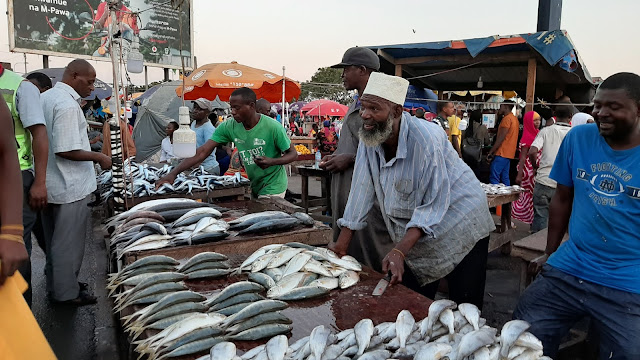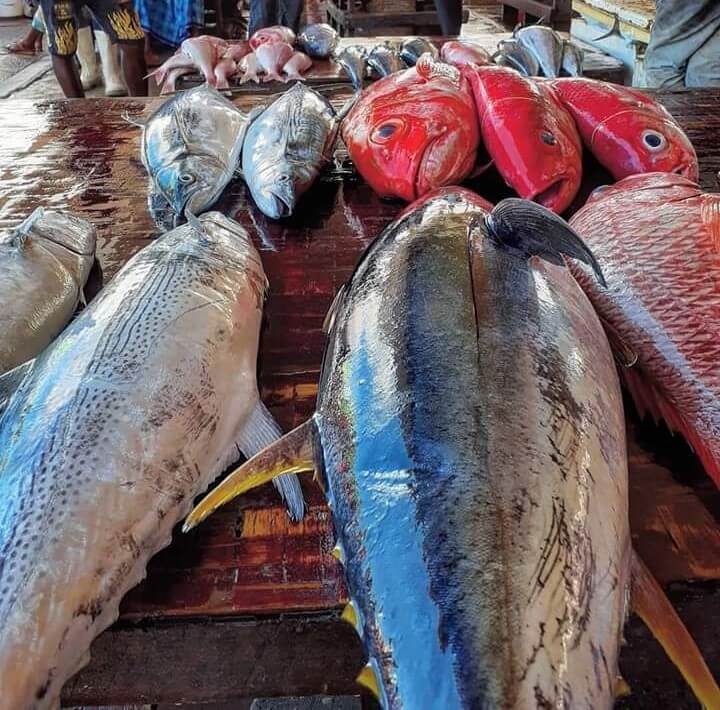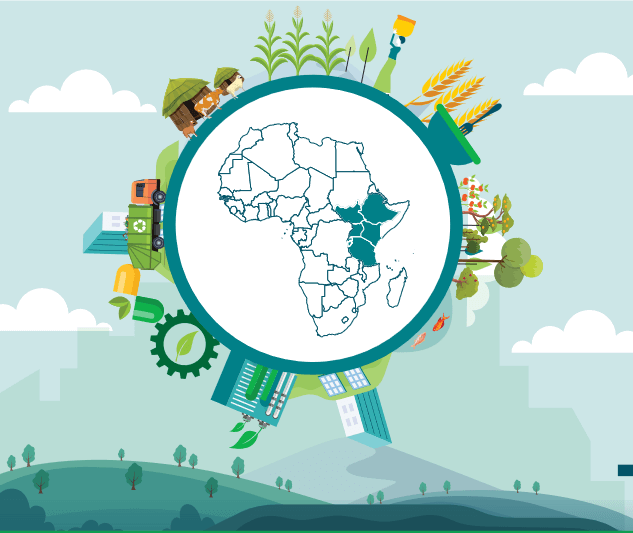Despite having abundant fish catch during this season of the year, fisher mongers in most Dar es Salaam city Suburbs sell fried fish at an exorbitant price.
A spot check done by The Business Wiz (TBW) at Buguruni, Temeke and Mwananyamala markets in the outskirts of Dar es Salaam city reveals that, small heaps of fried fish displayed over the table are sold at a relatively higher fixed price rate of 1,000/- without discount.
Likewise, the bigger heap sizes depending on fish species are sold at a starting price of 3,000/-
TBW visited Kivukoni International Fish Market located on the fringes of Indian Ocean in Magogoni suburb in Dar es Salaam city and a spot survey discovered that currently, there is a high supply of fish at the market.

Speaking to TBW this week, fishermen attributed the high supply of fish to the good weather with no wind especially at night that enables them to engage in fishing more easily
According to Hassan Ahamad a resident of Kigamboni, “During this season fish, prefer a stable and calm situation, but in case of turbulence they hide in deep waters where fishermen with low quality gear could not get them.
He added, “The strong winds are a big challenge and dangerous to our canoes which are too small an aspect that makes us afraid to putting our lives at risk,” Hussein Ally said.
A fish broker at the market who was identified by a single name as Mhina said the situation has lowereddown fish prices, with a bucket of sardines currently fetching at a relative price for traders who buys in bulk at between 30,000/- and 35,000/- in a tin weighing 20 kilograms.
Contacted for comments, the Fish Market Manager Denis Mrema admitted that the prevailing situation at his market adding that fish catch is more abundant due to the prevailing and conducive weather for fishing
He told TBW that despite having enough fish catch at the market, there are a number of challenges facing fishermen at the market with reliable storage facilities remaining the biggest one
“Initially, when the market was built with the help of Japanese government and handed over to the Ilala
Municipal Council during the third phase government in November 2002, the long term plan was to install storage facilities within the compound but despite promise by the government at that time, this has never been implemented an aspect that has opened an avenue for fishermen to look for other alternatives of preservation methods,” Mrema said.
He noted that plans are underway to revive the program in collaboration with the ministry.
Meanwhile, reports from a reliable sources at the market have confirmed to this writer that, the market is currently overwhelmed by fish traders, but has fewer infrastructures to accommodate them all at once
In addition, the famous market is faced with a number of challenges including large number of fish mongers most of whom are women who have thronged the market seeking for a daily livelihood, hence causing inconveniences.
The market which was initially designed to accommodate only 1,500 traders at that time, but now that the number has doubled to 3,000 traders beyond its capacity an aspect that has been causing troubles on movements.
The market Manager Denis Mrema said that the increased number of traders at the market has had a triple down effect on the infrastructural facilities currently available at the market.
He added that, in order to relieve the situation, the sixth phase government under President Samia Suluhuis planning to design another fish markets in a yet unidentified areas in every districts within Dar es Salaam region with a view to avert the current situation of overcrowding.
Statistics made available by the Ministry of Fisheries in the country shows that, annual production of fish
in the country stands at 375.1 million kilograms in all water surfaces, out of which an estimated 38.5 million kilograms are exported outside the country mostly in landlocked countries like Zambia, DRC,
Rwanda, Burundi and Uganda.
There is a steady rate of exportation of fish products regardless of losses and destructions that occurs in the process.
It is very surprising to note that, in view of this an average consumption of individual in the country, stands at 7.4 kilograms per person per year due to expensiveness of the commodity.
This is a very small quantity compared to what the United Nations Food and Agricultural Organization
(FAO) recommends that the per capital fish consumption for every individual should be 18 kilograms of fish product per year.
During the 2021/22, the government through the Ministry of Livestock and Fisheries set to finalize in its budget the preparations to rehabilitate the famous fish market, popularly known by many people as Ferry Fish Market at Magogoni in Dar es Salaam.
This was revealed by Minister in-charge of the docket Mashimba Ndaki during a meeting with artisanal fishermen and small scale traders conducting their activities at the country’s biggest fish market a month ago.
The minister, however, insisted that the rehabilitation project will not evict anyone from the facility, since there is a temporary relocation plan (TRP) in place to ensure everything goes smoothly.
Ndaki said about 30-40 per cent of Tanzania’s seafood products were not processed due to limited infrastructures, the reason why the sixth phase government under President Samia Suluhu Hassan was determined to improve the area in this 2021/2022 fiscal year.
At a full packed Ferry Fish Market, the minister added, the ministry had set aside over 2.6bn/- from its internal sources and other 1.17 bn/- from external sources during the period under review for rehabilitations of fish landing centre infrastructures as well as markets, as a strategy to improve fish and other seafood value chain.
“Improved fisheries infrastructures will help the country in fighting against illegal trade and illegal fishing. This will increase government collections as well as improve availability of statistics relating to the fishing industry,” the minister said.
Currently, fishing sector which contributes beyond the current 1.7 per cent in the country’s Gross Domestic Product (GDP), has employed about 4.5 million people in the country hence the ministry has been tasked to ensure the sector’s infrastructures are well improved to improve people’s lives.






